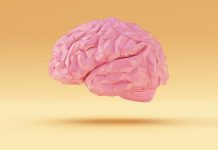
Using artificial intelligence (AI) to analyze specialized brain MRI scans, researchers have identified significant differences in the brain’s white matter tracts between adolescents with and without attention-deficit/hyperactivity disorder (ADHD).
This groundbreaking study aims to provide an objective and quantitative approach to diagnosing ADHD, a common neurodevelopmental disorder with a significant impact on individuals’ lives.
The research, presented at the annual meeting of the Radiological Society of North America (RSNA), represents a crucial step in addressing the challenges of ADHD diagnosis.
Understanding ADHD
ADHD is a prevalent neurodevelopmental disorder typically diagnosed in childhood and often persisting into adulthood.
The Centers for Disease Control and Prevention estimate that approximately 5.7 million children and adolescents in the U.S. have been diagnosed with ADHD.
Individuals with ADHD often struggle with attention span, impulse control, and regulating their activity levels. Early diagnosis and intervention are essential for effectively managing the condition.
Challenges in ADHD Diagnosis
Diagnosing ADHD primarily relies on subjective self-reported surveys, making it a complex and challenging process. Objective metrics for diagnosis are urgently needed to improve accuracy and reduce subjectivity.
The Role of AI and MRI Scans
This study is groundbreaking as it utilizes AI to examine MRI scans of adolescents from the multi-institutional Adolescent Brain Cognitive Development (ABCD) Study, which includes data from over 11,000 adolescents across the United States.
The researchers focus on a specialized MRI technique called diffusion-weighted imaging (DWI) to investigate white matter tracts in the brain.
The research team selected 1,704 individuals from the ABCD dataset, including both those with and without ADHD. They extracted fractional anisotropy (FA) measurements from DWI scans along 30 major white matter tracts.
FA measures the movement of water molecules along these tracts, providing insights into their structural integrity.
Using data from 1,371 individuals, the researchers trained a deep-learning AI model on FA values. They then tested this model on 333 patients, including 193 diagnosed with ADHD and 140 without.
ADHD diagnoses were confirmed using the Brief Problem Monitor assessment, a rating tool used to assess children’s functioning and responses to interventions.
Key Findings
With the assistance of AI, the study unveiled significant differences in FA values within nine white matter tracts in patients with ADHD. These differences correlated with ADHD symptoms, shedding new light on the disorder’s neural underpinnings.
The study’s level of detail in identifying MRI signatures related to ADHD is groundbreaking and offers promise for more objective and quantitative diagnostics.
Implications and Future Research
This study represents a significant step toward diagnosing ADHD with greater accuracy and objectivity. As more data from the ABCD dataset becomes available, the researchers plan to further refine their AI models and examine additional white matter tracts.
The ultimate goal is to develop imaging biomarkers that can play a crucial role in ADHD diagnosis, providing a quantitative and objective framework for assessment.
Conclusion
The integration of AI and specialized MRI scans is paving the way for a more accurate and objective diagnosis of ADHD, particularly in adolescents.
By identifying distinct brain differences associated with ADHD, this research offers hope for more effective early intervention and management of this prevalent neurodevelopmental disorder.
If you care about health, please read studies that scientists find a core feature of depression and this metal in the brain strongly linked to depression.
For more information about health, please see recent studies about drug for mental health that may harm the brain, and results showing this therapy more effective than ketamine in treating severe depression.
Copyright © 2023 Knowridge Science Report. All rights reserved.



